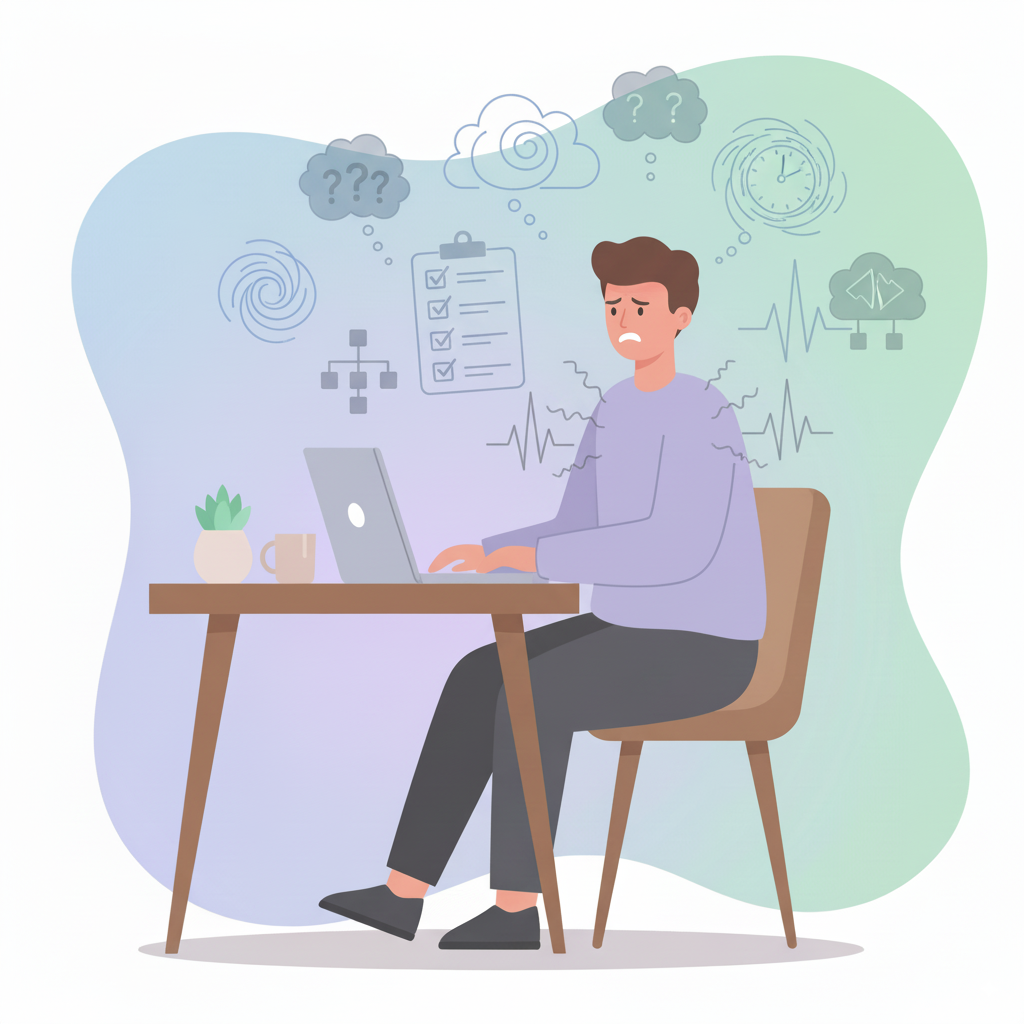
🧠 What Is High-Functioning Anxiety?
High-functioning anxiety is a term people often use to describe someone who appears to have their life together on the outside — productive, successful, calm — but is battling constant stress, worry, or overthinking on the inside. Unlike more obvious forms of anxiety, this type can fly under the radar because the person seems to be managing life well.
Many professionals don’t see “high-functioning anxiety” as an official diagnosis, but the symptoms are very real. People experiencing it may hold good jobs, maintain relationships, and look confident, yet they live with persistent anxiety that affects their emotional and physical well-being.
✅ High-Functioning Anxiety Symptoms Checklist
Here’s a simple checklist you can use to spot possible signs of high-functioning anxiety. You don’t need to have all of them — even a few could be meaningful.
Emotional Symptoms
• Constant overthinking and worst-case scenario thinking 🤯
• Persistent self-doubt despite achievements
• Irritability or restlessness
• Fear of letting others down
• Feeling “on edge” most of the time
Behavioral Symptoms
• Over-preparing for tasks 📝
• Avoiding situations out of fear of failure
• Perfectionism (never satisfied with results)
• Saying “yes” too often to please others
• Difficulty relaxing or taking breaks
Physical Symptoms
• Trouble sleeping 😴
• Fatigue even after rest
• Headaches or muscle tension
• Upset stomach, digestive issues
• Racing heartbeat or sweating without physical exertion
🎭 Why It’s Easy to Miss
High-functioning anxiety often hides behind success. People may:
• Excel at work or school 🎓
• Look organized and reliable
• Be seen as the “strong one” in family or friend groups
Because of this, symptoms are brushed off as just being ambitious, disciplined, or hardworking. That’s why self-awareness is crucial.
📋 How to Use This Checklist
1. Read through the symptoms slowly.
2. Notice if several apply to you regularly.
3. Track when they occur (daily, weekly, only during stress).
4. Consider writing them down in a mood journal 📔.
🛠️ Quick Tools You Can Try
If you recognize yourself in this checklist, here are some simple tools that can help:
• Breathing exercises 🌬️ → Try the 4-7-8 method (inhale 4 sec, hold 7 sec, exhale 8 sec).
• Daily journaling 🖊️ → Write worries down to release them from your head.
• Mindful breaks ⏸️ → Step away from work for 5 minutes of stretching or silence.
• Limit caffeine ☕ → Too much coffee can fuel anxiety symptoms.
• Sleep hygiene 🛏️ → Create a calm bedtime routine with low light and no screens.
📅 A Simple 7-Day Starter Plan
Here’s a beginner-friendly routine to experiment with:
Day 1: Write one page in your journal.
Day 2: Take a 10-minute walk outdoors 🚶♀️.
Day 3: Practice one relaxation breathing exercise.
Day 4: Reduce caffeine intake by one cup.
Day 5: Try a soundscape for sleep 🌌.
Day 6: Practice gratitude by writing 3 things you’re thankful for.
Day 7: Reflect on the week — what worked, what didn’t.
🚨 When to Seek Professional Help
It’s important to know when to get support. Consider reaching out to a mental health professional if:
• Anxiety interferes with your sleep regularly 😴
• You feel constant physical symptoms (headaches, stomachaches, racing heart)
• Work, relationships, or daily life feel overwhelming
• You find yourself unable to enjoy things you used to love
💡 Practical Notes on Treatment
Treatment may include:
• Therapy: Cognitive Behavioral Therapy (CBT) is often effective. 🛋️
• Medication: Prescribed by a professional if necessary.
• Lifestyle changes: Regular exercise, nutrition, mindfulness.
A combination of small lifestyle habits + professional guidance tends to work best.
❓ Frequently Asked Questions
Q: Is high-functioning anxiety a real diagnosis?
A: Not formally, but it’s a widely recognized experience many people relate to.
Q: Can high-functioning anxiety go away on its own?
A: Symptoms may improve with lifestyle changes, but often professional support is helpful.
Q: Is it the same as generalized anxiety disorder (GAD)?
A: They share symptoms, but GAD is an official diagnosis. High-functioning anxiety is more of a descriptive term.
👉 Final Notes & Next Step
High-functioning anxiety can feel invisible — others may see your achievements, but not the constant inner struggle. The first step is awareness. Use this checklist, try small daily changes, and consider professional support if needed. 💙
Your mental health matters. If you’ve found yourself nodding while reading this, take today as your sign to start making gentle, positive changes.



Leave a Reply